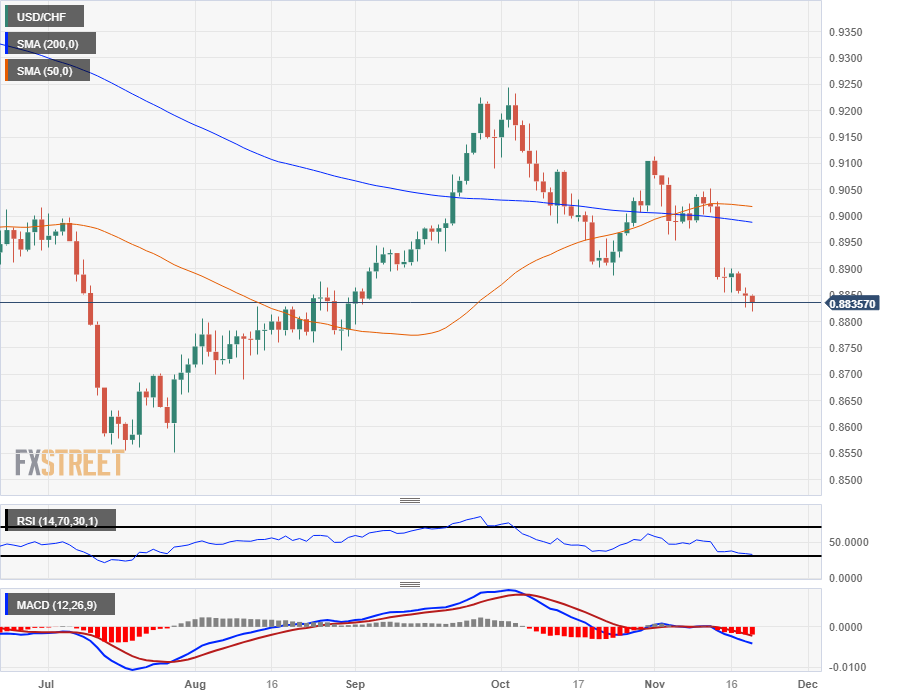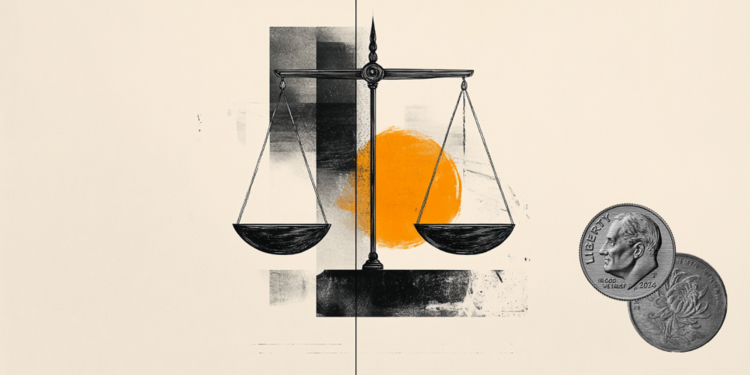- USD/CHF retreats towards the 0.8800 area.
- The Dollar has lost more than 3% in November against the rebound of the Swiss Franc.
- The upcoming Fed Minutes could boost markets at the close of trading on Tuesday.
The pair USD/CHF continues to decline during the trading session on Tuesday, heading towards the 0.8800 area, while investors prepare for the publication of the latest Federal Reserve (Fed) minutes, which will be released at 2:00 p.m. EST .
The Swiss franc (CHF) has rallied of late, with Switzerland enjoying a moderate inflation rate compared to the rest of the European bloc, while the Swiss National Bank (SNB) has been regularly selling off its foreign exchange reserves.
SNB flows push CHF higher, Fed could misalign with investor expectations
The SNB’s foreign exchange reserves have reached massive levels in recent years, approaching the entire Swiss gross domestic product. The SNB has routinely bought foreign currency to prevent a rapid appreciation of the desirable CHF in an effort to defend its domestic exporters.
But when the SNB’s balance sheet grows too much, it is forced to reverse flows into currency markets, dumping foreign cash reserves and buying back francs, causing the price to rise steadily.
Upcoming Fed Meeting Minutes Could Boost Dollar Markets. Markets celebrate the end of the rate hike cycle and expect a possible rate cut, since last week’s inflation data was lower than expected.
A hawkish tone in the Fed Minutes could derail the expectations of market participants, causing the US dollar to falter as investors rush to adjust their positioning going forward.
Current rate of the Swiss Franc
The following table shows the percentage change of the Swiss Franc (CHF) against the currencies listed today. The Swiss Franc was the strongest currency against the Euro.
| USD | EUR | GBP | CAD | AUD | JPY | NZD | CHF | |
| USD | 0.22% | -0.31% | -0.22% | 0.01% | -0.29% | -0.28% | -0.10% | |
| EUR | -0.21% | -0.51% | -0.42% | -0.22% | -0.50% | -0.47% | -0.31% | |
| GBP | 0.31% | 0.53% | 0.09% | 0.30% | 0.03% | 0.03% | 0.21% | |
| CAD | 0.23% | 0.44% | -0.08% | 0.22% | -0.06% | -0.04% | 0.13% | |
| AUD | -0.01% | 0.23% | -0.30% | -0.21% | -0.29% | -0.27% | -0.07% | |
| JPY | 0.29% | 0.51% | -0.02% | 0.06% | 0.29% | 0.01% | 0.20% | |
| NZD | 0.26% | 0.47% | -0.05% | 0.04% | 0.25% | -0.04% | 0.16% | |
| CHF | 0.10% | 0.32% | -0.22% | -0.12% | 0.10% | -0.18% | -0.16% |
The map shows the percentage changes of the major currencies against each other. The base currency is chosen in the left column, while the quote currency is chosen in the top row. For example, if you choose the euro in the left column and scroll down the horizontal line to the Japanese yen, the percentage change in the box will represent EUR (base)/JPY (quote).
USD/CHF Technical Outlook
The Swiss franc retreated against the US dollar from near decade highs reached in July (0.8552) to 0.9244 in early October, but the franc has appreciated again, taking the US dollar through the 0.9000 zone and sinking the pair again towards 0.8800.
USD/CHF spent most of October and early November hanging above the 200-day SMA between 0.9050 and 0.9000, but the pair is currently experiencing a downward acceleration as CHF resumes its climb. .
The 50-day SMA made a bullish crossover of the 200-day SMA in early November, but the bearish action will cause the 50-day SMA to turn lower again, which would provide technical resistance for any near-term bullish play. in the USD/CHF.
USD/CHF Daily Chart

Source: Fx Street
I am Joshua Winder, a senior-level journalist and editor at World Stock Market. I specialize in covering news related to the stock market and economic trends. With more than 8 years of experience in this field, I have become an expert in financial reporting.







